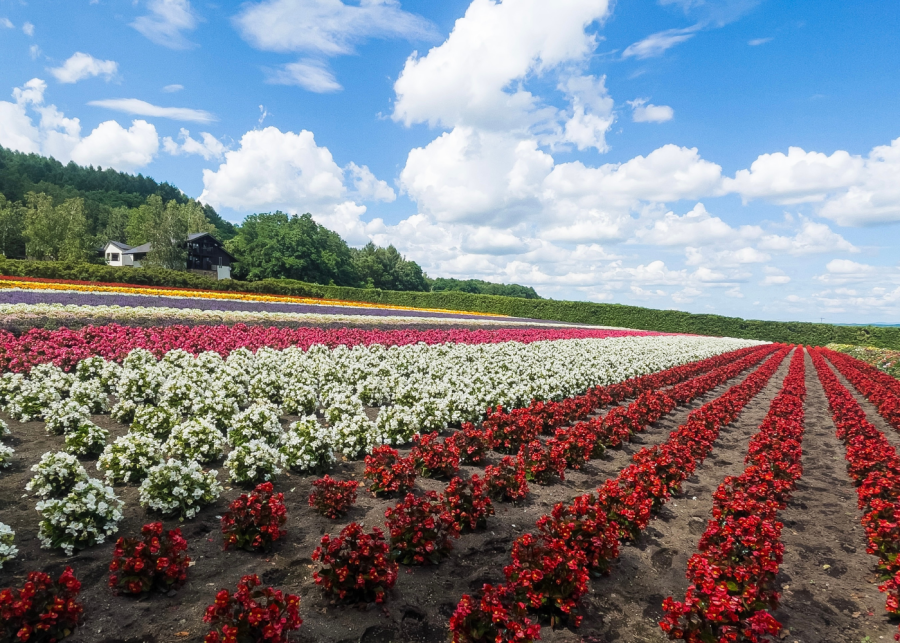
Discover Japan’s best flower bloom seasons, from cherry blossoms in spring to lavender fields in summer, and plan your perfect floral getaway.
If you’re anything like me, chasing flower bloom seasons in Japan feels like chasing magic. There’s something special about those fleeting moments when the landscape transforms from delicate pink cherry blossoms in spring to fiery red kochia bushes in autumn. Over the years, I’ve followed these blooms from Tokyo’s bustling parks to peaceful mountain gardens. Each season has given me unforgettable memories, and these are the seasonal blooms and spots that stole my heart.
Japan’s flower season in spring: March to May
Cherry blossoms (sakura): Visit from late March to early April
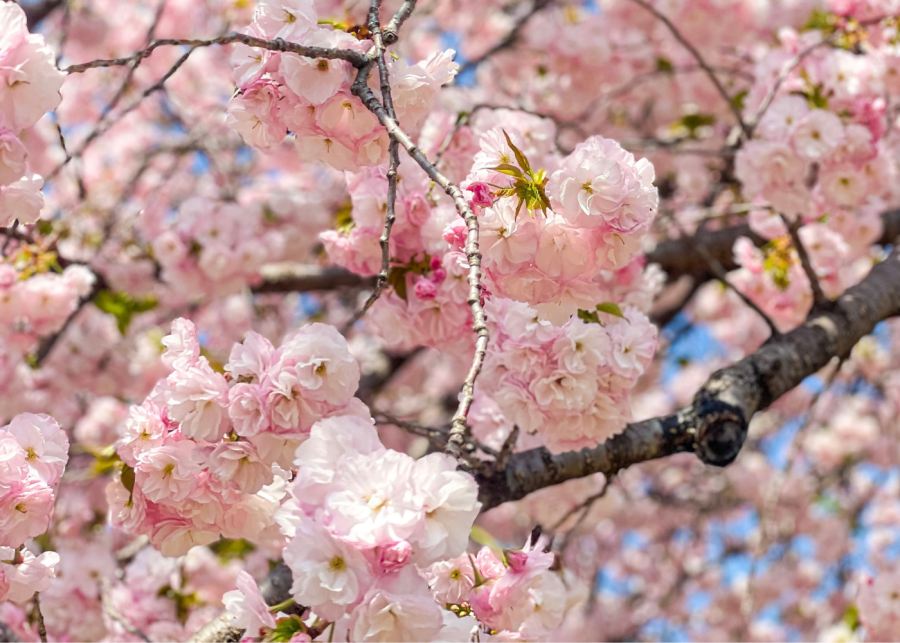
Tokyo: Ueno Park feels like the whole city decided to press pause and celebrate spring together. With over 1,000 cherry trees lining the central path, the park turns into a pink tunnel during peak bloom. It’s absolutely breathtaking.
What I love most is the atmosphere: groups of friends, families and coworkers sprawled out on blue tarps eating bento boxes, laughing, and soaking in the fleeting beauty of the sakura. Go early in the morning to avoid massive crowds; bring snacks and a picnic mat!
Kyoto: Tucked beside the famous Yasaka Shrine, Maruyama Park is Kyoto’s go-to cherry blossom spot. The centrepiece is a massive shidare-zakura (weeping cherry tree) that glows beautifully when lit at night. Visit just before dusk to see the magical transition from daylight to evening. Grab street food from nearby stalls (yakitori and sakura mochi are my personal faves!) and find a quiet bench or grassy spot to enjoy the view.
Wisteria: Visit from mid to late April
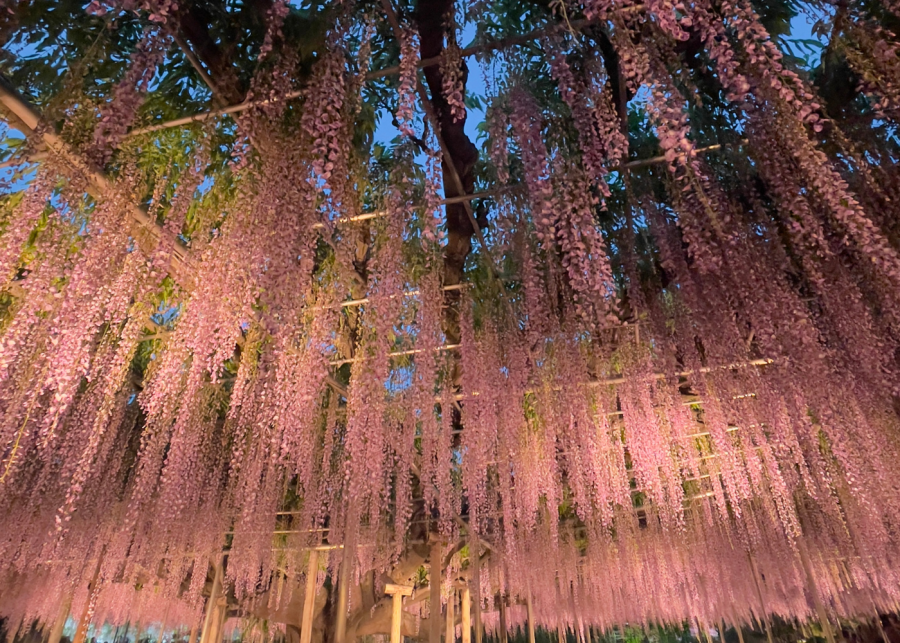
Tochigi: I’ll never forget the first time I walked beneath the wisteria canopies at Ashikaga Flower Park – it felt like I’d stepped into a fairytale. The way the pale purple blooms drape overhead like nature’s chandeliers is breathtaking. My favourite spot is the Great Wisteria Tree, at over 150 years old, with blossoms that stretch out like a living umbrella.
I’d recommend you arrive late afternoon and stay for the night illumination. The wisteria lit up against the evening sky is pure magic. It gets crowded, but the beauty is worth it.
Fukuoka: Visiting Kawachi Fuji Garden during wisteria season feels like stepping into a Studio Ghibli scene. The famous wisteria tunnels drape above you in soft purples, pinks and whites. I soaked in the quiet rustle of petals and the sweet floral scent in the air, and it was one of the most peaceful, almost surreal, flower experiences.
Oh, and book your ticket in advance, as they limit entry to keep the crowds manageable, which I appreciated. Go on a weekday morning for the calmest experience.
Azaleas: Visit in late April
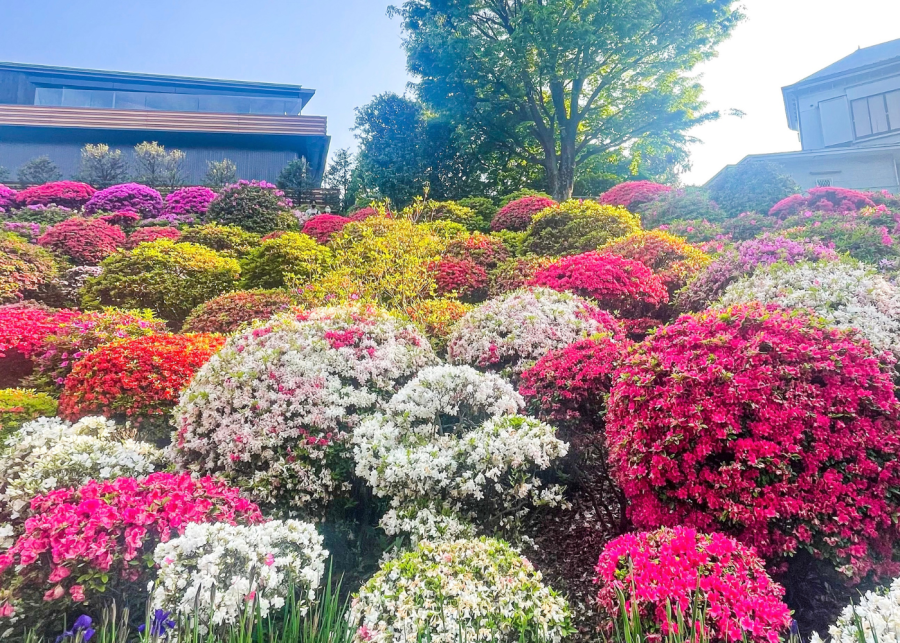
Tokyo: Nezu Shrine in spring feels like stumbling into a secret garden. On a quiet weekday morning, I wandered through hundreds of blooming azaleas cascading down gentle hills like a floral waterfall. The contrast of the vibrant flowers against the shrine’s traditional vermilion torii gates made it feel almost surreal. Visit mid-morning to enjoy the soft light, and wear comfy shoes as the azalea garden is hilly.
Tokyo: Whenever I need a peaceful break from the city buzz, I head to Shiofune Kannon-ji. The hillside bursts into vibrant pinks and purples when the azaleas bloom in late spring. I love exploring the winding paths, hearing birds sing, and soaking up the tranquillity. It’s one of those spots where you can slow down, breathe deeply and forget you’re still in Tokyo.
Tip: bring snacks and make a half-day out of it, as the temple grounds are peaceful and great for a solo stroll.
Tulips: Visit from mid to late April
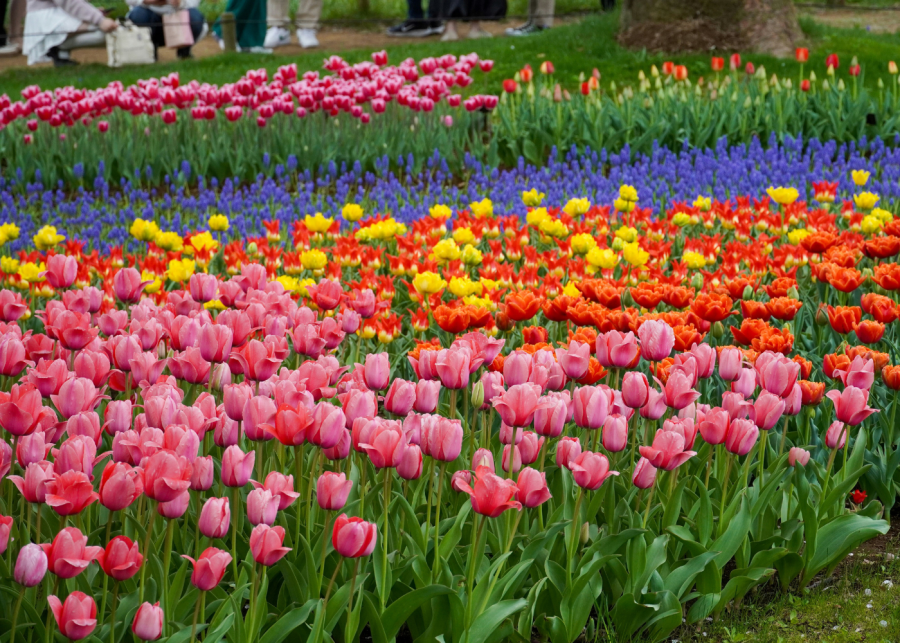
Chiba: The windmills and tulip fields at Sakura Furusato Square made me feel like I was in the Netherlands. It’s such a cheerful, laid-back spot that’s perfect for a leisurely walk or snapping fun photos. Plus, the local vendors selling fresh fruit and snacks nearby make the experience feel warmer and authentic.
Toyama: Tonami Tulip Park bursts to life every spring with endless rows of tulips in every shade imaginable. Visitors often find themselves smiling as they stroll or cycle through the fields, surrounded by the fresh, fragrant air of the season. It’s the perfect spot to take in nature’s simple beauty and enjoy a peaceful escape from the everyday hustle.
Roses: Visit from late April to early May
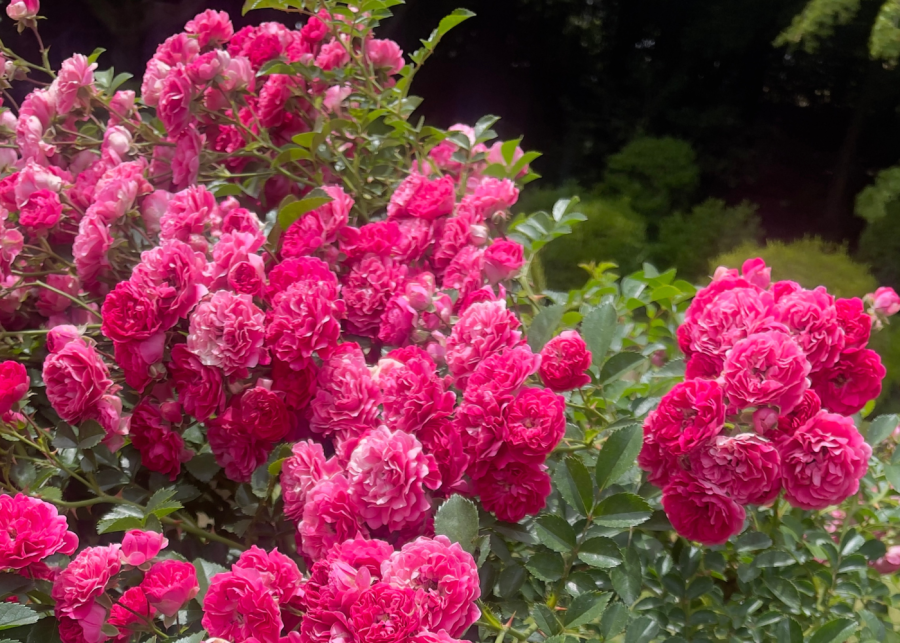
Tokyo: Whenever I need a peaceful escape without leaving Tokyo, Kyu-Furukawa Gardens is my go-to spot. The rose garden feels like a little oasis with perfectly manicured rows of roses in every colour and an elegant European-style architecture as a backdrop. I love bringing a book or a journal with me and finding a bench for quiet reflection or a lazy afternoon with nature.
Kanagawa: Yokohama English Garden offers a serene escape with its stunning rose garden, showcasing vibrant blooms in a dazzling array of colours. The winding paths invite you to stroll while taking in the sweet fragrance of the roses. Best visited on sunny spring days, the garden provides a peaceful retreat near the city.
Nemophila: Visit from mid to late April
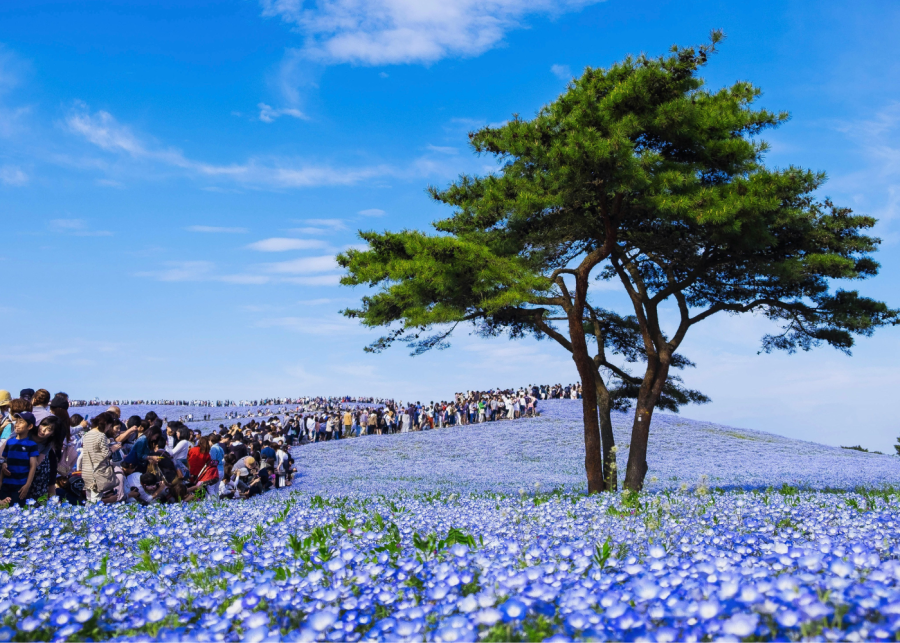
Ibaraki: Hitachi Seaside Park is hands-down the most famous place in Japan to see nemophila. Over 4.5 million flowers blanket the park’s iconic Miharashi Hill, creating waves of blue that seem to roll right into the sky. The first time I visited, I gasped when I reached the top of the hill. The view of the blue blossoms under an equally blue sky was jaw-dropping. It’s hard to believe it’s real until you see it for yourself.
Tip: go on a weekday morning as it gets crowded, especially on weekends. Wear comfy shoes (there’s a bit of uphill walking) and don’t forget sunglasses. If you visit in early spring, the canola flowers are still in bloom nearby, giving you a stunning yellow and blue combo that feels straight out of a fairytale.
Canola flowers (Nanohana): Visit in April
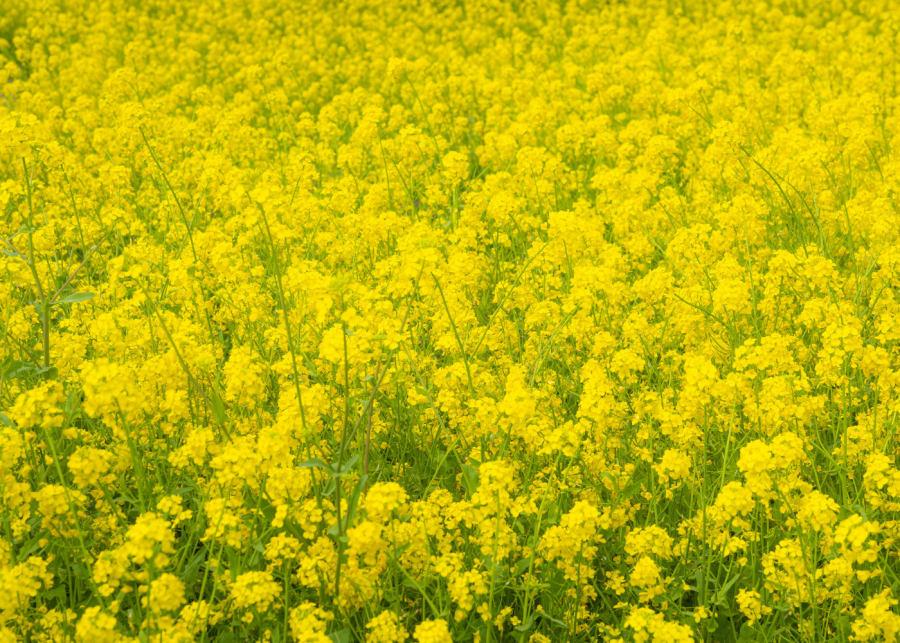
Ibaraki: I visited Hitachi Seaside Park in early spring, expecting the famous nemophila, but it was the bright yellow canola fields that completely stole the show. Stretching across gentle hills, they looked like golden waves under the sun. It felt like walking through a Van Gogh painting.
My advice? Visit from late March to early April, and come early before the park gets crowded. Rent a bike at the entrance, as it’s the best way to explore the massive grounds and stumble across lesser-known flower patches along the way.
Saitama: Nestled in the peaceful countryside, Chichibu Arakawa transforms into a vibrant sea of golden canola flowers each spring. It’s a lesser-known spot, which means fewer crowds and a more relaxed, local atmosphere. Stroll along narrow paths through the fields, soak in the sweet scent of the blossoms, and enjoy a quiet escape from the city, just a couple of hours from central Tokyo. Oh, and if you visit in early March, you’ll catch the canola and plum blossom blooms.
Japan’s flower season in summer: May to September
Hydrangeas (Ajisai): Visit in June
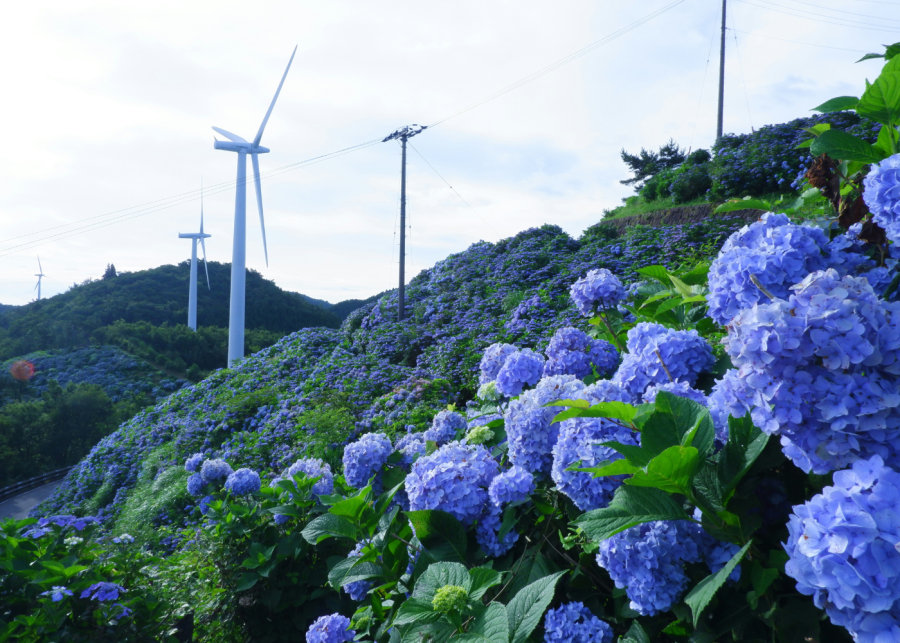
Kamakura: When I visited Meigetsuin Temple during hydrangea season, it felt like stepping into a watercolour painting. The stone pathways were lined with hundreds of blue and purple blooms. Even with a light drizzle, the whole place had this peaceful, almost magical vibe. I’d say go early in the morning on a weekday to avoid crowds and catch that dreamy, misty atmosphere.
Lavender: Visit in mid July
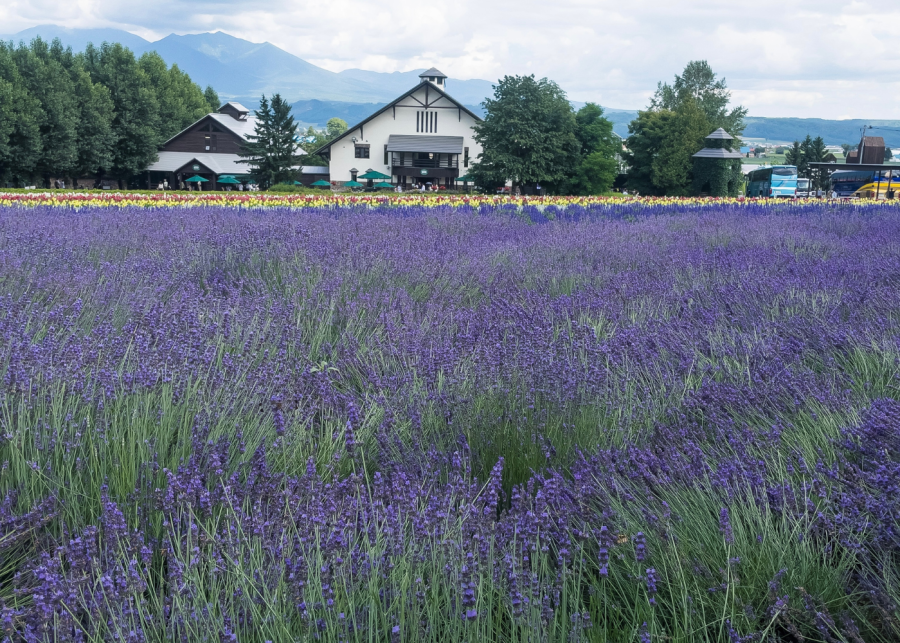
Hokkaido: Experiencing Farm Tomita in summer felt like stepping into a purple dream with endless rows of blooming lavender. I treated myself to the famous lavender ice cream (yes, it’s purple, floral, and so refreshing!) and wandered the fields in total bliss. It was one of those slow, grounding days that made me appreciate nature’s little luxuries.
Sunflowers: Visit from late July to early August
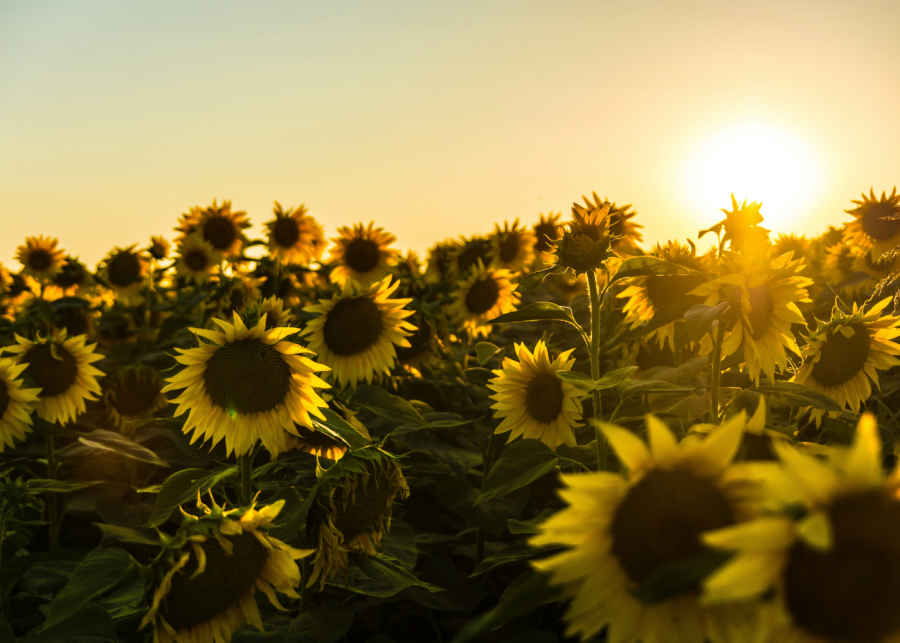
Kanagawa: At the Zama Sunflower Festival, it feels like you’re walking through a sea of sunshine. The energy is warm and happy, with families taking photos, kids running between rows, and everyone soaking in that simple joy you only get in summer. I left with my camera full and my heart even fuller. For the best experience, check it out in late afternoon for the golden hour light – the photos are magical.
Japan’s flower season in autumn: September to November
Spider Lilies (Higanbana): Visit from mid to late September
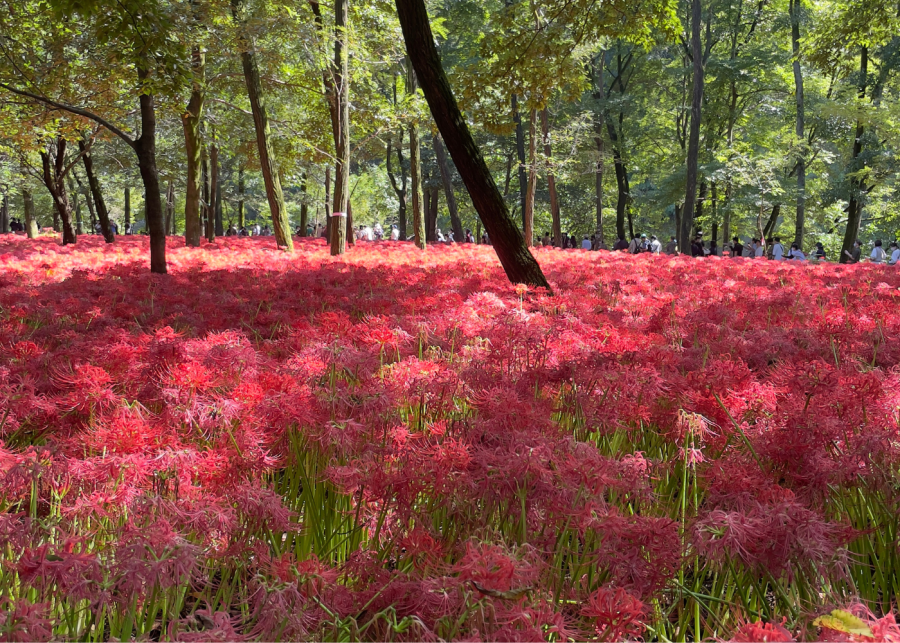
Saitama: These weren’t on my radar until I stumbled across Kinchakuda Manjushage Park, and now they’re one of my favourite seasonal blooms in Japan. The entire riverside transforms into a sea of deep crimson, with thousands of delicate, spidery petals stretching beneath the trees. It’s peaceful, a little eerie and incredibly beautiful – the kind of place that makes you slow down and take it all in.
Kochia (Bassia): Visit in October
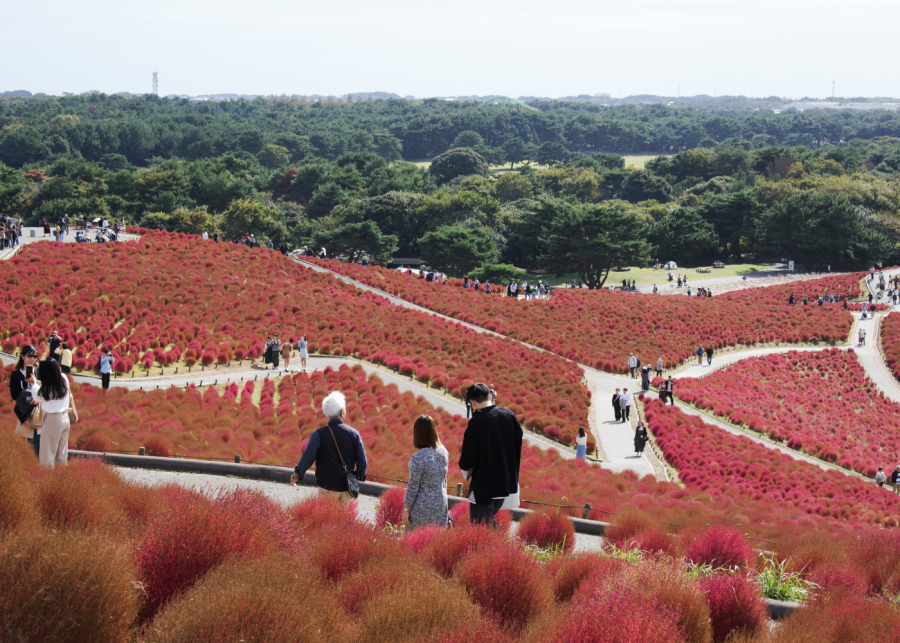
Ibaraki: Seeing the kochia bushes turn bright red in autumn at Hitachi Seaside Park felt like walking through a fuzzy, fiery dream. The hills looked like they were on fire in the best, most surreal way. It’s one of those rare places that’s even more stunning in person than in photos. Arrive just before sunset for golden hour light.
Cosmos: Visit in October
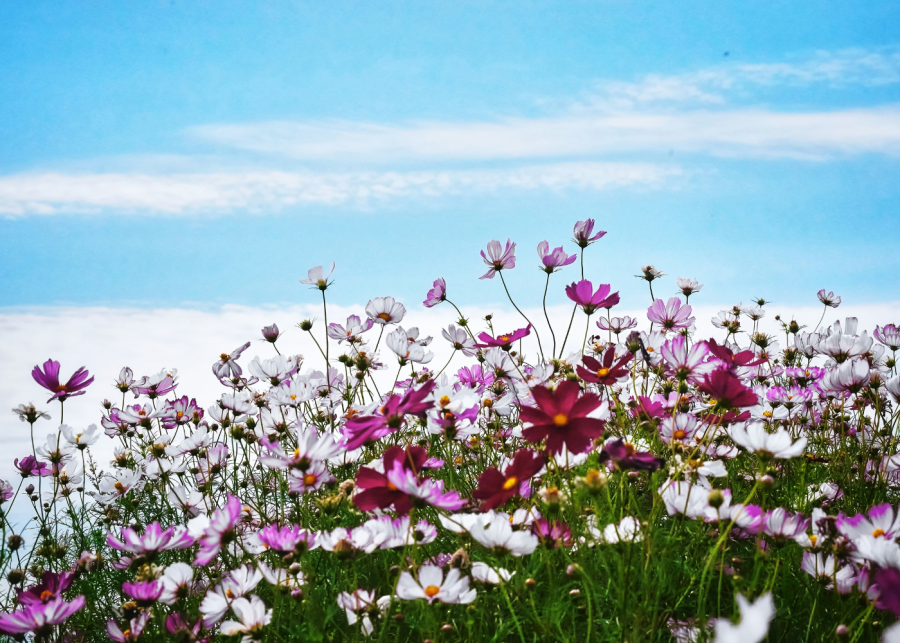
Tokyo: At Showa Kinen Park, I found myself surrounded by delicate pink and white cosmos swaying gently in the breeze. I spent hours wandering the wide-open fields, camera in one hand and an iced tea in the other, soaking in the peace and playfulness of it all. There were families picnicking, couples laughing, and kids running through the flowers. If you rent a bike at the park entrance, it’s the most fun (and scenic) way to explore all the flower fields in one afternoon.
Momiji (Japanese maple leaves): Visit in November
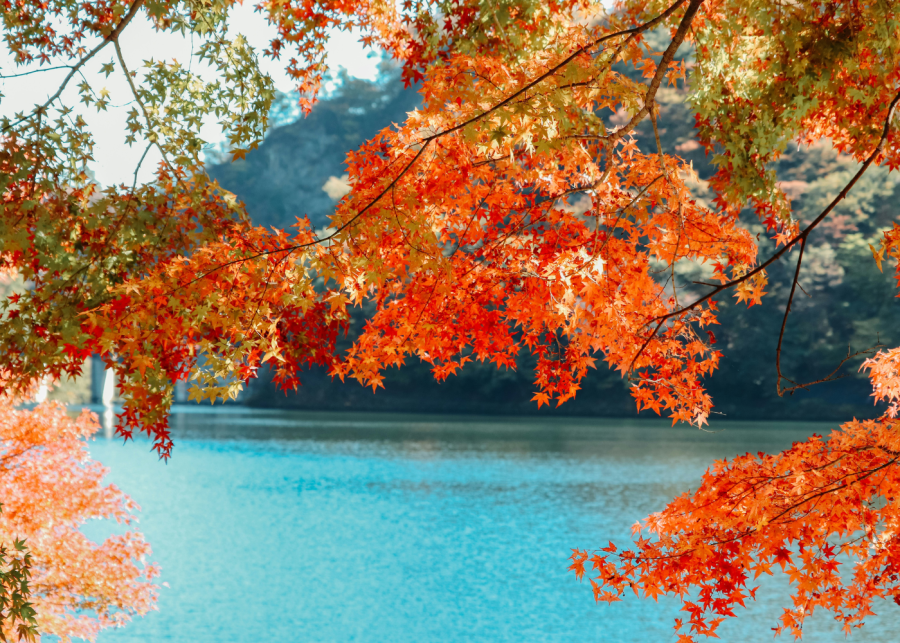
Tokyo, Kanto: Admiring the autumn leaves at Mount Takao was like walking through a tunnel of flame-coloured trees. Take the chairlift up and hike down for the perfect mix of views and adventure without exhausting yourself, and sip warm amazake at the summit while you watch the sun hit the maples just right.
Kyoto: In peak autumn, Arashiyama transforms into a kaleidoscope of red and gold, with every path, bridge and hillside wrapped in the warm glow of Japanese maple leaves. I sipped warm matcha while watching the leaves drift down like confetti. It was a little romantic – one of those rare moments that made me feel totally present. If you go early in the morning, you’ll beat the crowds and catch the soft, golden light filtering through the leaves.
Japan’s flower season in winter: December to February
Camellias: Visit from December to February

Tokyo: Oshima Island offers a winter escape where vibrant red and pink camellias bloom boldly against the cold landscape. Strolling the island’s quiet paths, you’ll enjoy the striking contrast of these warm, colourful flowers brightening up the chilly season. It’s a serene and refreshing way to experience nature’s resilience during winter. I’d recommend you rent a bike to explore the island’s camellia-lined paths at a relaxed pace.
Wintersweet: Visit in January
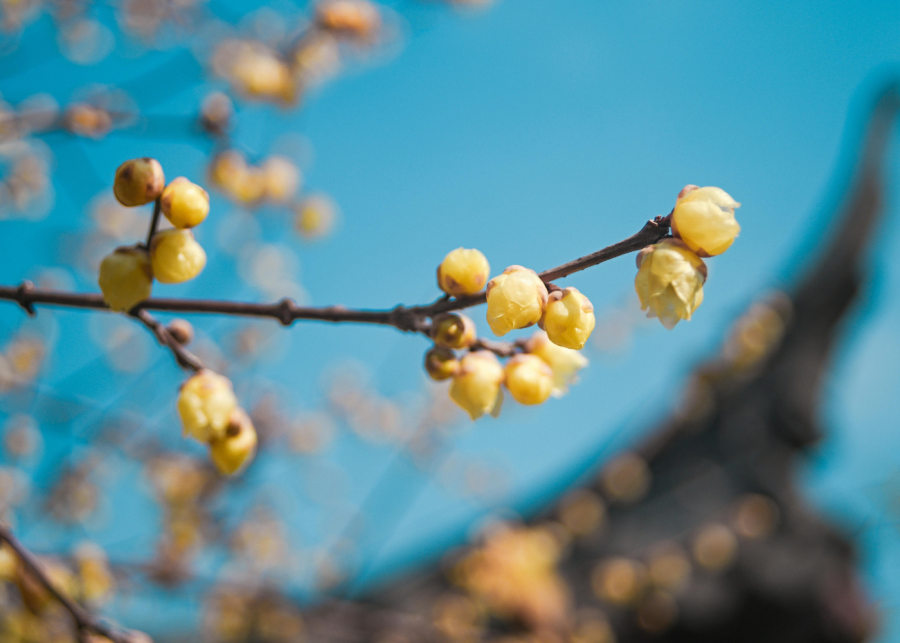
Mito: Wintersweet at Kairakuen Garden offers a charming splash of bright yellow blooms that bring warmth and colour to the chilly winter landscape. The delicate flowers fill the air with a subtle, sweet fragrance, creating an almost magical atmosphere amid quiet garden paths. It’s a beautiful way to experience Japan’s winter season beyond the usual snow scenes. Tip: bring a warm drink and take your time wandering the garden to enjoy the soothing scent and tranquil ambience.
No matter what time of year you visit, Japan’s flower seasons have a way of surprising you. For me, chasing these blooms is about more than sightseeing. It’s a way to slow down, connect with nature and find little moments of joy in everyday life. Happy flower chasing!

